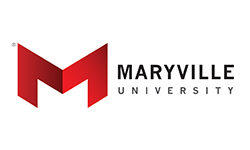

Transact Payment Processing
Simplify campus payments and reconciliation on one secure platform
Let's Chat Take a Tour
Streamline payments & reconciliation with Transact Integrated Payments.
Offload third-party coordination, chargebacks and refunds, reducing the staff workload.
Consolidate process steps for a more efficient experience and streamlined reconciliation.
Access to more transaction data provides better reporting tools and more timely insights.
Ensures PCI-compliance and the safety of sensitive information.
Provides guaranteed payment support 24/7 for administrators, students and families.
Choose how you handle processing fees
SmartPay
- Save money by cutting transaction costs
- Manage convenience or service fees associated with credit and debit card charges
- Secure financial transactions
CampusPay
- Accept ACH and cards for all tuition payments.
- Campus absorbs the fees.
- Secure and simple!
Explore Payment Processing at your own pace with our interactive demo.
Colleges and Universities are Embracing our Integrated Payments Products
Have more questions?
Experience a live customized demo of our suite of solutions, get answers to your specific questions, and find out why Transact is the right choice for your institution.
Please submit your information and a Transact representative will follow up with you within 48 hours.
How to Improve Payment Processing at Universities and Colleges
Handling payments for a university can be overwhelming, but it doesn't have to be. Real-time payment processing is quickly becoming the gold standard for universities, providing students with instant confirmation that their tuition and fees are covered. This quick reassurance is especially valuable at the start of the semester when timely service is critical.
What is Payment Processing?
At its core, payment processing refers to the automation of financial transactions through a centralized platform. Whether students are paying tuition, parents are covering fees, or alumni are making donations, the action of making a payment should be easy and secure. With payment processors, institutions can ensure that every transaction, whether a recurring payment or a one-time purchase, is verified and authorized swiftly.
Payment processing systems are essential for managing the vast number of financial transactions that universities handle daily. From online payment processors to mobile wallets, a secure payment processing system allows institutions to manage tuition payments, bookstore purchases, donations, and more.
Who's Involved in Payment Processing?
Understanding the entities involved in the payment processing ecosystem helps clarify how everything works behind the scenes. Here are the key players:
- Cardholder: The person making the payment, often a student, parent, or even an external vendor.
- Merchant: The university or college receiving the payment for tuition, fees, or campus services.
- Payment Gateway: The technology that securely facilitates the transaction between the cardholder and the merchant.
- Payment Processor: The company that acts as the intermediary, moving funds between the customer's bank and the university's bank while ensuring everything is properly authorized.
In a typical transaction, multiple parties are involved. Payment processors connect the issuing bank (the bank that provides the card) to the acquiring bank (the university's bank) to ensure smooth and secure payment transfer. Each of these institutions may take a small fee from the transaction, known as the interchange fee.
Why Integrated Payment Systems are Critical for Universities
Many universities use various platforms, like student information systems (SIS), for tracking tuition and fee payments. Integrating these systems with a secure payment processing platform reduces errors, allows for real-time updates, and mitigates the need for manual entry.
With the right payment processor in place, universities can connect multiple services under one umbrella, ensuring better reporting, easier reconciliation, and more streamlined workflows. The automation of this process ensures fewer missed payments and enables more precise reporting for university administrators.
Furthermore, integrating payment systems with student information systems provides students with a seamless and secure way to make recurring payments or one-time tuition payments from anywhere. Automating recurring payments through integrated payment systems also helps universities manage their cash flow more efficiently, with predictable incoming revenue.
Offering Multiple Payment Methods
Today's students expect flexibility when it comes to making payments, and universities can adapt to meet those expectations. Payment processing systems should accept multiple forms of payments, including:
- Automated Clearing House (ACH): A secure and cost-effective option for transferring funds directly from a bank account. Ideal for recurring tuition payments or large one-time payments.
- Credit and Debit Cards: A traditional and widely used method, allowing students and parents to make payments quickly and easily with the cards they already carry.
- Mobile Wallets: Digital options like Apple Pay and Google Pay cater to students who prefer mobile-first solutions. These platforms offer speed, security, and convenience.
- International Funds Transfers (IFT): Essential for international students, IFT capabilities ensure tuition and fees can be paid from overseas banks with proper currency conversion and compliance support.
- 529 Plans: Enable families to use tax-advantaged savings accounts to pay for qualified education expenses. Integration with 529 disbursement services can streamline the process for both families and institutions.
- Checks (via Remote Deposit Capture): While less common among students, checks remain a preferred method for some parents and guardians. Remote Deposit Capture (RDC) allows checks to be scanned and deposited electronically, reducing processing time and enhancing convenience for back-office operations.
Offering diverse payment processors ensures that students and parents can select the most convenient payment method, ultimately improving satisfaction.
The Growing Importance of Real-Time Payment Options
Real-time payment processing has become a critical capability for universities. It provides students with immediate confirmation that their tuition or fees have been received, reducing uncertainty and stress.
Universities that offer real-time payment processing systems experience quicker cash flow and more efficient budgeting. Plus, real-time updates to student accounts reduce the need for follow-up inquiries, which lightens the administrative load on university staff.
Mobile Payment Capabilities: Meeting Students Where They Are
Students live on their mobile devices, and payment processing systems should strive to reflect that. Universities adopting mobile-first strategies allow students to make payments directly from their phones. Payment processors can help integrate options like Near-Field Communication (NFC) payments or mobile-friendly portals, making it easier for students to pay from anywhere at any time.
Universities that offer mobile-friendly payment platforms see improved user experience, fewer late payments, and better overall satisfaction from students and parents alike. Explore financial habits and technology use among college students in our recent research study.
Card Present vs. Card Not Present (CNP) Transactions
It's essential for universities to distinguish between card-present and card-not-present transactions. Payment processors must be equipped to handle both types of transactions securely and efficiently.
- Card Present: Transactions where the cardholder taps, physically swipes, or inserts their card, such as at the campus bookstore or dining hall.
- Card Not Present (CNP): These are typically online transactions, such as paying tuition through a university portal, where the card is not physically present.
The majority of student transactions today fall under the CNP category, so having robust online payment options is essential for modern payment processing systems.
Security and Compliance in Payment Processing
Security is paramount in the world of payment processing. Universities must comply with strict regulations, such as the Payment Card Industry Data Security Standard (PCI DSS), to ensure all transactions are secure. This means employing secure payment gateways, using point-to-point encryption, and implementing fraud detection measures to protect both the institution and the cardholder.
Payment processors should also offer robust tools to help universities maintain compliance with evolving security standards. Protecting sensitive student data through tokenization, encryption, and SSL certificates is essential for ensuring trust in the payment processing system.
Automating Recurring Payments and Billing
Recurring payments can be a game-changer for universities that offer installment plans or ongoing services. By automating recurring payments, schools can reduce administrative burden and ensure consistency in billing. Students can set up automatic tuition payments, eliminating the stress of missed deadlines, while administrators enjoy a more predictable revenue stream.
Automated billing and reminders can also enhance payment collection, sending students alerts when payments are due and allowing them to complete the transaction effortlessly through the institution's payment processing system.
Streamlining Reconciliation Processes
Reconciling payments across various systems can be a time-consuming and error-prone process. Centralizing the reconciliation process allows universities to track payments in real time, minimizing errors and discrepancies. A unified payment processing system can automate much of this, reducing the workload on finance departments and increasing transparency across departments.
Reducing Credit Card Processing Fees
Processing fees can quickly add up, especially for universities with large student populations. These fees, also known as interchange fees, are a necessary part of accepting card payments.
However, by using a payment processing system that supports strategies like batch processing or flat-rate fee structures, universities can effectively manage or reduce these fees while still accommodating all card types. This approach not only simplifies fee management but can also lead to substantial cost savings over time.
Why Transact Integrated Payments Solutions Make a Difference
As payment processing in higher education becomes more complex and demanding, colleges and universities need a configurable platform that improves efficiency, enhances security, and increases student satisfaction.
Transact collaborates with campuses to provide advanced, secure payment solutions that integrate seamlessly with their SIS and financial applications, available in real-time or batch processing.
With tools like ePayment, eRefund, and eBill, universities can simplify fee management, improve the reconciliation process, and stay compliant.
By partnering with Transact, universities gain a powerful ally in modernizing their financial operations and payment transactions while delivering superior service to their students.




















